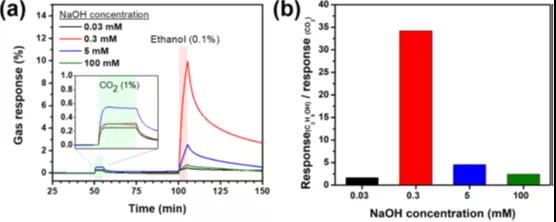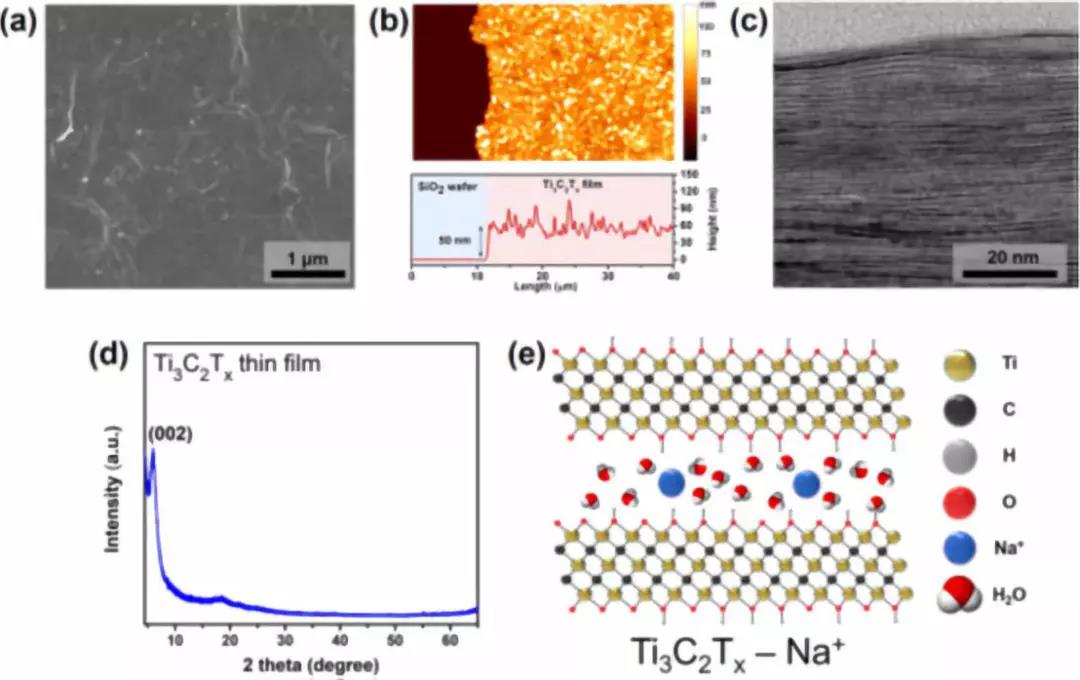Metal ion insertion enhances selectivity of MXene gas sensor: in-situ X-ray diffraction study
QQ Academic Group: 1092348845
Detailed
 【Research Background】
【Research Background】
With the increasing demand for the detection of toxic pollutants, organic vapors and other gas types, the development of gas sensors with high selectivity and sensitivity has received widespread attention. Among many sensing materials, two-dimensional materials are considered promising because of their high surface-to-volume ratio, excellent surface adjustability, and high efficiency at room temperature. Based on the charge transfer sensing mechanism, two-dimensional materials such as graphene, transition metal disulfides (TMDs), and phosphene are used as sensor channels to detect toxic gases and organic compounds. However, despite these advantages, the sensitivity, selectivity, and recovery time of two-dimensional materials need to be improved. In recent years, gas sensors based on metal two-dimensional titanium carbide (Ti3C2Tx) MXene films have shown outstanding sensitivity and a very high signal-to-noise ratio, overcoming past limitations. The Ti3C2Tx MXene sensor shows that the ppb level detection of gases such as acetone and ammonia exceeds the highest sensitivity of existing two-dimensional material gas sensors. Interestingly, the Ti3C2TxMXene gas sensor has a higher response to volatile organic compounds (VOCs) than oxidizing gases such as NO2, which indicates that the sensor has high selectivity and ultra-high sensitivity. In order to take full advantage of the potential of these highly sensitive metal MXene sensing channels, understanding their gas sensing mechanism is critical to making the best sensor with high selectivity for target gas molecules.
[Achievement Profile]
Recently, Professor Yury Gogotsi of Drexel University and Professor Hee-Tae Jung of the Korea Academy of Science and Technology published an article in the internationally renowned academic journal ACS Sensors entitled: Enhanced Selectivity of MXene Gas Sensors through Metal Ion Intercalation: In Situ X‑ray A research paper in the Diffraction Study. In-situ x-ray diffraction (XRD) method was used to study the interlayer swelling behavior of Ti3C2TxMXene thin film chemical resistance when gas and steam were introduced. By comparing the real-time (in-situ) changes of the interlayer distance when the Ti3C2Tx sensor is unresponsive and responding to gas, the possible effects of interlayer swelling on the gas sensing behavior are studied. In addition, the intercalation of metal ions is used to control the molecular insertion to control the selectivity of the gas. And, from a basic point of view, MXenes is one of the best materials to study the effect of interlayer swelling on the change in conductivity, because it has a unique combination of high conductivity and high intercalation ability. It is hoped that this work will be helpful for understanding the sensing mechanism of two-dimensional metal-based chemical resistance and designing highly selective MXene sensors.
[Picture and text guide]
 Figure 1. Morphology and structural characteristics of a 50nm Ti3C2Tx film transferred onto a SiO2 / Si wafer.
Figure 1. Morphology and structural characteristics of a 50nm Ti3C2Tx film transferred onto a SiO2 / Si wafer.
 Figure 2. In-situ XRD measurement of Ti3C2Tx film (transferred from a 0.3 mM NaOH solution) with gas introduction.
Figure 2. In-situ XRD measurement of Ti3C2Tx film (transferred from a 0.3 mM NaOH solution) with gas introduction.
Figure 3. Effect of NaOH at different concentrations on the swelling behavior of Ti3C2Tx films.

Figure 4. Gas sensing performance of a NaOH-treated Ti3C2Tx sensor at room temperature.
[Summary of this article]
In this paper, the in-situ XRD test was used to study the change of the interlayer distance of Ti3C2TxMXene after introducing gas. N2 and the target gas / vapor for gas sensing experiments were introduced into the Ti3C2TxMXene film in the XRD chamber in order to study the relationship between the film expansion behavior and the gas sensor response. During the measurement, when ethanol vapor was added, the Ti3C2TxMXene membrane expanded selectively, but there was no expansion after adding CO2. The results show that the concentration of intercalated sodium ions is the key to determine the degree of swelling after the introduction of ethanol vapor. The swelling degree was consistent with the gas reaction intensity. The Ti3C2TxMXene membrane treated with 0.3 mM NaOH had the largest swelling degree and the highest reaction to ethanol. Therefore, it is important to use pre-insertion as a way to optimize gas-sensitive performance. This study helps to understand the gas sensing mechanism of MXenes and provides insights into the interaction of gas or vapor molecules with MXenes, which is also important for adsorbents, separation membranes and other applications.
Literature link:
https://doi.org/10.1021/acssensors.9b00310.
- Previous: 没有了...
- Next: MXene breakthrough: Na


 mxene academic
mxene academic
